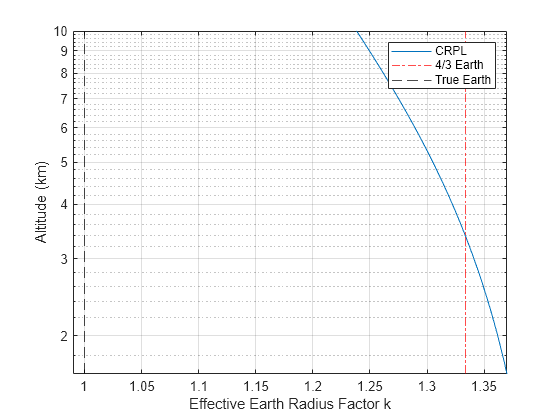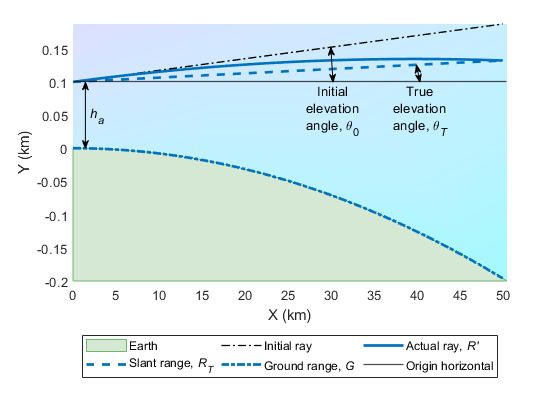atmosphere
Description
atmos = atmosphere(scenario,model)atmosphere object atmos that belongs to a
radar scenario object. The atmosphere is defined by the atmospheric
refraction model. To enable this object method, set the
IsEarthCentered property of the radarScenario
object scenario to true.
After creating the atmosphere, you can use the effearthradius
object function to compute the effective earth radius and the effective earth radius
factor.
atmos = atmosphere(___,Name,Value)atmosphere object with additional properties specified by one or
more name-value arguments.
Examples
Input Arguments
Name-Value Arguments
Output Arguments
More About
References
[1] Bradford R. Bean, G. D. Thayer. CRPL Exponential Reference Atmosphere, U.S. Department of Commerce, National Bureau of Standards, 1959.
[2] Blake, L. V. "A Note on Selection of an Atmospheric Refractivity Model for Radar Range-Height-Angle Charts." NRL Report 5626, Apr. 24, 1961
[3] Blake, L.V. "Ray Height Computation for a Continuous Nonlinear Atmospheric Refractive-Index Profile." RADIO SCIENCE, Vol. 3 (New Series), No. 1, Jan. 1968, pp. 85-92.
[4] Doerry, A. W. "Correcting Radar Range Measurements for Atmospheric Propagation Effects." edited by Kenneth I. Ranney and Armin Doerry, 90771K. Baltimore, Maryland, USA, 2014. https://doi.org/10.1117/12.2048977.
[5] Doerry, A. W. "Earth Curvature and Atmospheric Refraction Effects on Radar Signal Propagation." Sandia National Laboratories, SAND2012-10690, Jan. 2013.
[6] Robertshaw, G. "Effective Earth Radius for Refraction of Radio Waves at Altitudes above 1 Km." IEEE Transactions on Antennas and Propagation 34, no. 9 (September 1986): 1099-1105. https://doi.org/10.1109/TAP.1986.1143948.
[7] Sweezy, W. B. , and B. R. Bean. "Correction of Atmospheric Refraction Errors In Radio Height Finding." Journal of Research of the National Bureau of Standards, D. Radio Propagation, 67D, no. 2 (March - April 1963).
Version History
Introduced in R2022b















